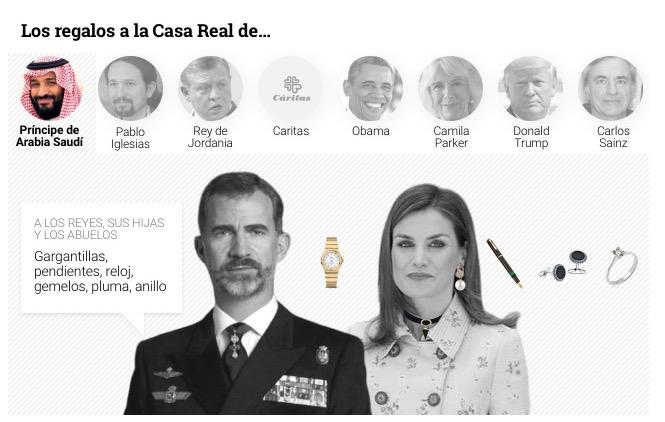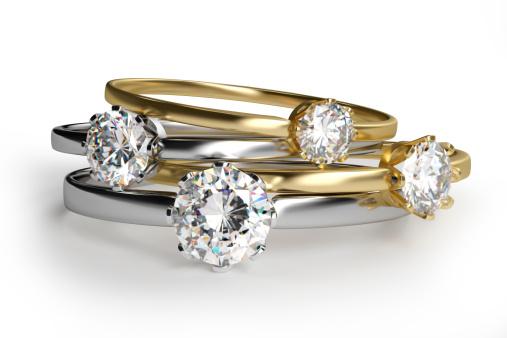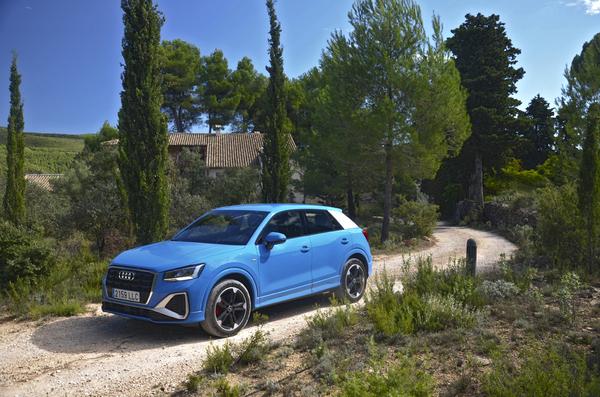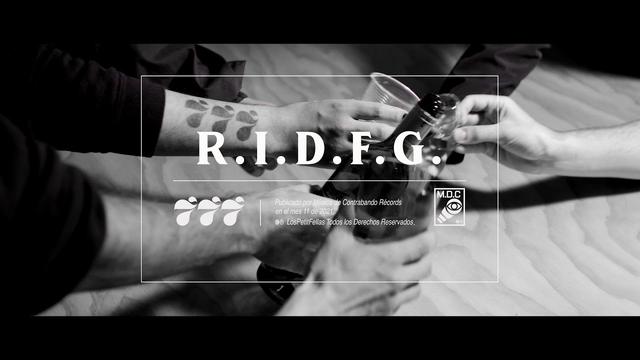"The only important asset that they have given me as a king is the La Mareta estate, in the Canary Islands. The King of Jordan gave it to me and I asked Solchaga [Minister of Economy with Felipe González] what I should do with it; he replied that I had to pay taxes, and so I gave it to the State". The anecdote comes from José Bono's book, where the politician remembers that literal conversation with Juan Carlos I in 2009. It also reflects well what the gift policy has been in the Royal House. Until 2015, total opacity. What has been given to the kings, who did it, or where those gifts have ended up is a secret for the public.
The Casa del Rey does not report any personal or institutional gift that has been made to the monarchs or their families prior to 2015, so it remains to be confirmed what happened to the cheetah that Juan Carlos I received in Ethiopia, as confirmed by information from El Mundo, for how much the two Ferrari sports cars that the Prime Minister of the United Arab Emirates gave him were sold for (and which went up for auction), as well as the fate of the precious stone pistol that Hussein of Jordan apparently gave him. The most famous usufruct gift given to the king emeritus was the yacht Fortuna, after Balearic businessmen ordered it to be built to retain the loyalty of the royal family in Mallorcan summers. The king got rid of the ship in 2013 and National Heritage returned it to the businessmen, who sold it to the Abel Matutes shipping company for more than two million euros.
As of 2015, the policy of royal gifts changed, after the entry into force of the Transparency Law in December 2014 and the arrival to the throne of Felipe VI. On January 1 of that year, the Royal House published the Gift Regulations for members of the Royal Family, inspired by the law and as incomplete as this one in the section on gifts. The main problem is that the valuation of the gift is left to private discretion, since it does not establish economic limits. Also from that year on, the Royal House decided to annually publish an official list of the institutional gifts received and which are deposited in National Heritage, classified by year, reason for the gift and by recipient (the king, the queen, both, their daughters and the emeritus kings), but only those that have been made in the course of receptions, official acts or that have been made by public institutions. Outside the radar are personal gifts, made by individuals or companies and those that occur outside the spotlight and the agenda.
In that official list it does appear, for example, the first seasons of the Game of Thrones series that Pablo Iglesias gave to the king in 2015 during a visit by the monarch to the European institutions in Brussels: "It seems very good to me, I have not seen it" , Felipe VI told him about the DVDs, which now appear cataloged in National Heritage, under the heading "Complete Blu-Ray Collection of the four seasons of the series."
That year the king also officially received another 325 gifts: for example, a rifle and a saddle with which the king of Jordan presented him on an official visit. In the list there are plates and cups, ties, paintings, a model plane or four Caritas aprons for him and the queen. Obama gave her an aviator jacket in 2016 and Trump, a billiard game case during his visit to Spain in 2018. Melania gave the queen a tea set and the wife of Prince Charles of England gave Letizia a pill box The mayor of London to the king, a folding bicycle, the same gift (although not folding) that the president of China gave to the infantas Sofía and Leonor. Hogar Don Orione, where Iñaki Urdangarin does social work, also had a detail with Queen Sofía during a public audience with her in 2018, to which he presented a photograph and a sculpture. Thus, up to 1,573 gifts in four years [here, the search engine], whose main recipient is the king and those who receive the least, the emeritus, since they are the ones with the least official agenda.
These gifts, although owned by the State, can be used by the family, but they will always be part of the public stock. Where are those thousands of gifts? There are some in "corridors or rooms" of the palaces and also others stored in "rooms, for example there is one of about 30 meters in the Royal Palace" with all that material, Patrimony sources explain. A small part of them are in use and therefore in the Palacio de la Zarzuela, where the kings reside, but most are cataloged and stored.

That regulation does not put an economic limit on acceptable gifts, it simply says that the Royal Family (kings, kings emeritus, infanta Leonor and princess Sofía) "will not accept gifts for themselves that exceed the usual, social and courtesy uses", the same principle that governs the Transparency Law and in all administrations in general. To find out how to decide what is excessive, taking into account that there is no economic limit included in the norm, the Royal House refers to the Presidency, which has not yet answered the questions from eldiario.es. The institutional ones also have no economic limit.
One of those gifts that could exceed the limits were the jewels that Crown Prince Bin Salman gave to all the members of the family during his visit to Spain in 2018. The Arab prince – punctuated by the murder of critical journalist Khashoggi seven months after his visit to Spain and now under suspicion in the hacking of Jeff Bezos' phone – he arrived at the Torrejón de Ardoz air base on April 11, on the trip in which an agreement was signed for the Navantia company to build five corvettes for the country governed by its absolute monarchy. He was received by Felipe VI, who also offered a banquet in his honor at the Royal Palace. It was on this visit that Bin Salman made surely the most valuable gift of the 1,573 published by the Royal House from 2015 to 2018. He gave the king "cufflinks, a watch, a ring, a fountain pen and a Muslim rosary". To Juan Carlos I, whom he greeted at the Formula 1 awards after the journalist's murder, as shown in a controversial photo, he gave him the same thing, except for the rosary. To Queen Letizia a "set of necklace, bracelet, earrings and ring", and another set to Queen Sofía. He also thought of the girls, whom he presented with "sets of necklace, watch, earrings, bracelet and ring."
Neither the Royal House nor the Presidency have allowed this medium to know the valuation of these jewels, which were transferred to National Heritage, as the regulation says for cases in which gifts to the family exceed "usual uses". The other option when the gifts are too valuable, according to the regulations promoted by Felipe VI, is that they be "ceded to a non-profit entity that pursues general interest purposes." Nor is it public how many gifts have ended up in NGOs, since the rules specify that if they are donated, it should be done "preserving the anonymity of the donor, the reason or occasion of delivery and the member of the Royal House who received it."
In the public list, you can only find gifts classified as institutional – those made by national or foreign authorities in acts or at official receptions, those from public institutions or international institutions – and those that were personal but members of the Royal Family they have donated to Patrimony (case of the Saudi jewels) when understanding that the gift "can compromise the dignity of the institutional functions" and "exceeds the uses". The value of the presents is not published, despite the fact that there is a specific commission made up of employees of the Royal House that is dedicated to classifying them by their value and importance and deciding whether or not they are institutional and how they are stored.
But that list does not include all the gifts, because personal gifts are not known, that is, they are not from official bodies or institutional visits and remain off the public radar: beyond gifts from the intimate sphere of the family (brothers, uncles, friends...) Companies or entities that have been able to send the kings present for their personal use, to promote products, as a courtesy or to obtain influence or make themselves known are not included in the lists either. Neither the Royal House nor the Presidency have responded in this regard either.
The regulations themselves contemplate an exception for the most personal and special occasions: "In the case of anniversaries or celebrations of a singular nature of a member of the Royal Family in which it is presumed that they will give rise to the offering of gifts, a specific regime will be established which will be the subject of public information", says point 4.3. At this time, Felipe VI has turned 50, and some gifts related to the anniversary appear on the official list: the former leader of Ciudadanos, Albert Rivera, gave him a framed photograph. Alberto Núñez Feijóo, two ties and an "oak seedling". When the list of 2019 gifts is made public, it will be known if they also gave the kings special gifts for their five years of reign.
"There is no surveillance system with gifts in general in the public administration, and neither in this case," explains Patricia González, legal researcher at Access Info Europe. "Our recommendation is that the law establish the maximum amount of money because, if not, who decides what is customary? The expert also points out the importance of more transparency in gifts, since this prevents uncontrolled lobbying activity. It is the same problem that exists in public administration and with politicians, whose cases have sometimes reached the courts.
For example, the case of Francisco Camps' suits (he was acquitted) or Rita Barberá's bags (he was not tried). The problem in measuring whether excessive gifts have been accepted lies in the lack of an objective range and in the fact that, in the case of justice, it has to be shown that they were accepted in exchange for something, the experts explain. However, some institutions and organizations have clarified the economic limit by promoting their own regulations. For example, the Madrid City Council does not allow accepting gifts of more than 50 euros, the same amount set by the European Union. Galicia has set the limit at 90 euros for a public representative to accept a gift.
The British royal house, like the Spanish, also has a gift regulation and it is earlier, but in this case it does set a limit. When someone makes a personal gift to members of Elizabeth II's family without a friendship or relationship, the gift must not exceed 150 pounds (178 euros, at the exchange rate, according to the valuation of this Friday). If he does, it must be donated. For companies, it directly states that the general rule is to "reject" them. The same economic limit applies to the queen for gifts to her family on the occasion of weddings, birthdays or Christmas, even from people or institutions known to the 'royals': if it exceeds 150 pounds, that gift will be considered official. In fact, Queen Elizabeth got a fight for the gift from Porcelanosa that her son Prince Charles accepted in 2001, an Arab-inspired garden that was installed in one of her residences.
The regulation promoted by Felipe VI also regulates other possible economic advantages that members of the royal family could receive. For example, point 4.1 regulates that "they will not accept loans without interest or with interest below the normal market rate, or gifts of money." It also prevents inheritances from being left to them by people "who do not have a family relationship." In that case they will have to donate them to Heritage or charitable institutions. Asked about how many inheritances the kings have received, the Royal House refers to the Presidency, which has not yet responded.




